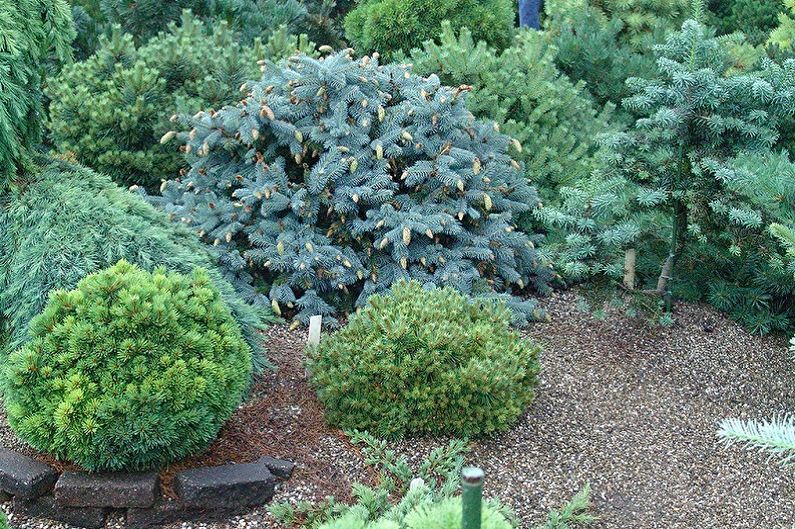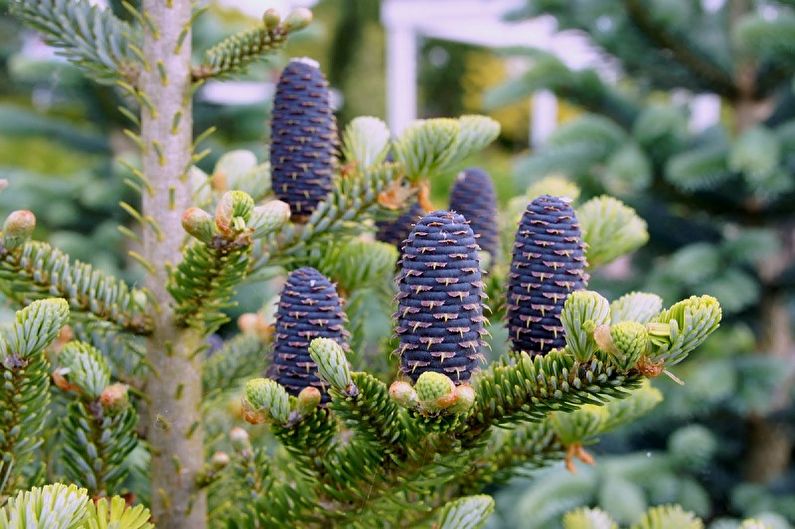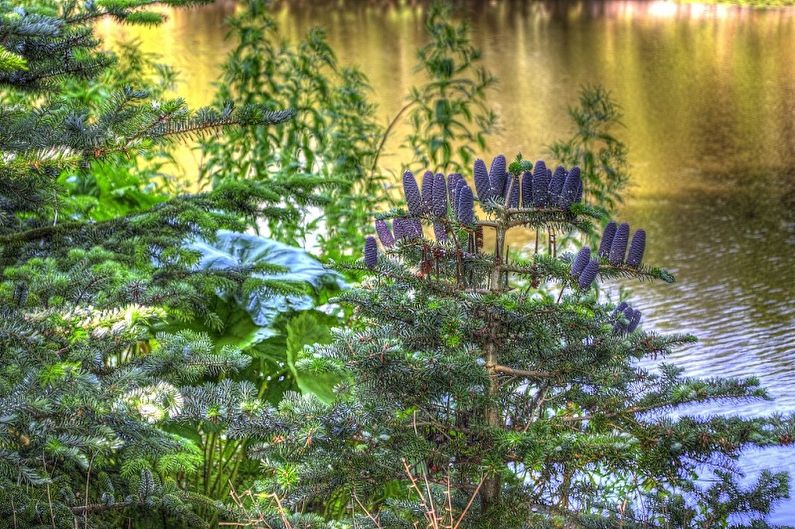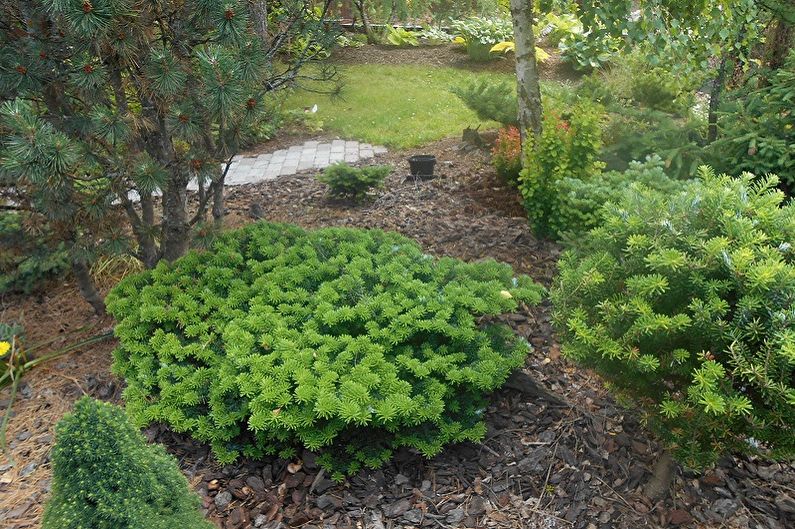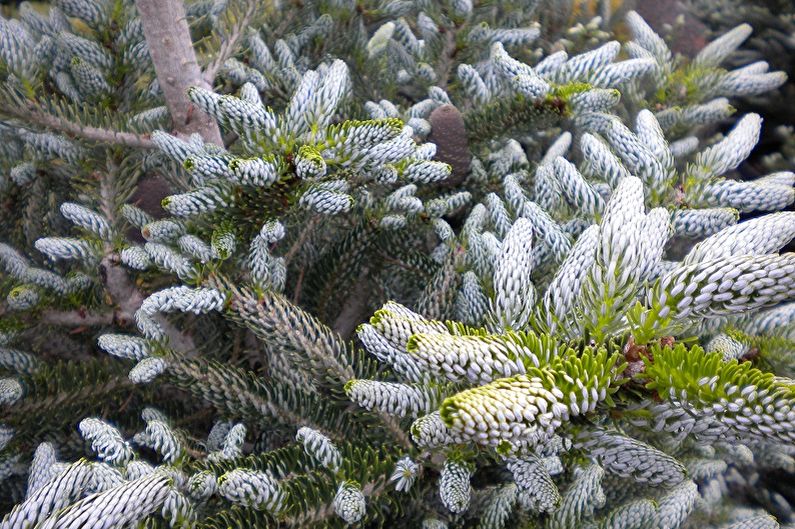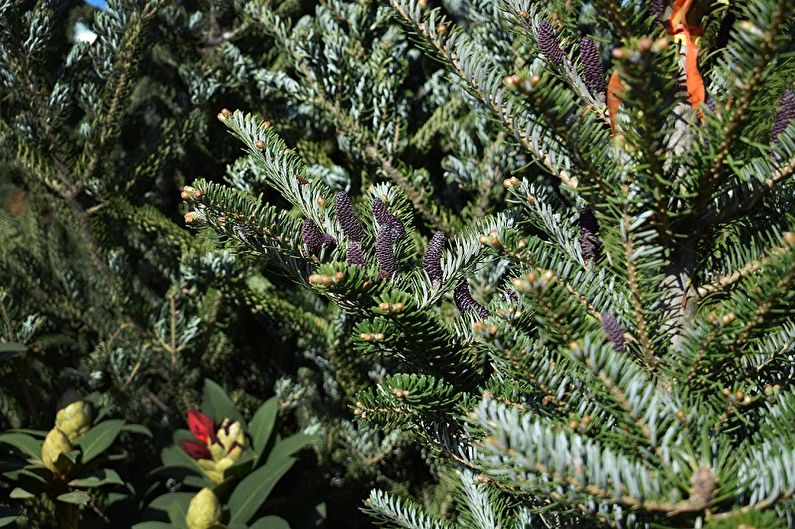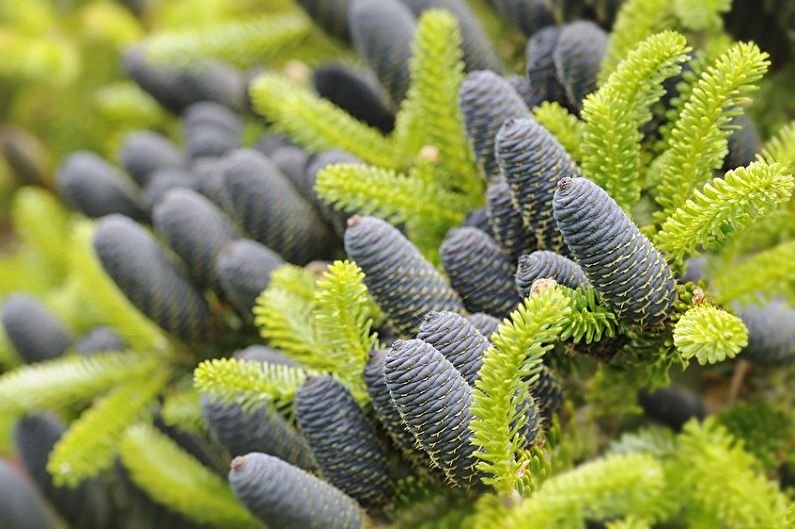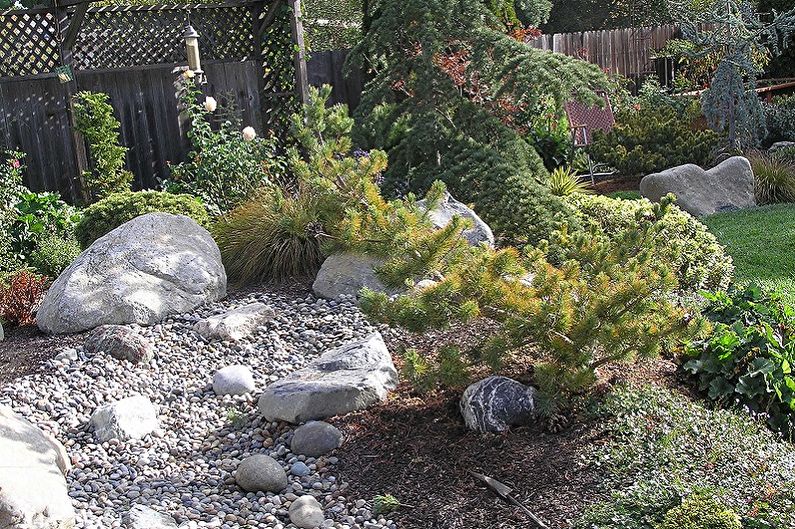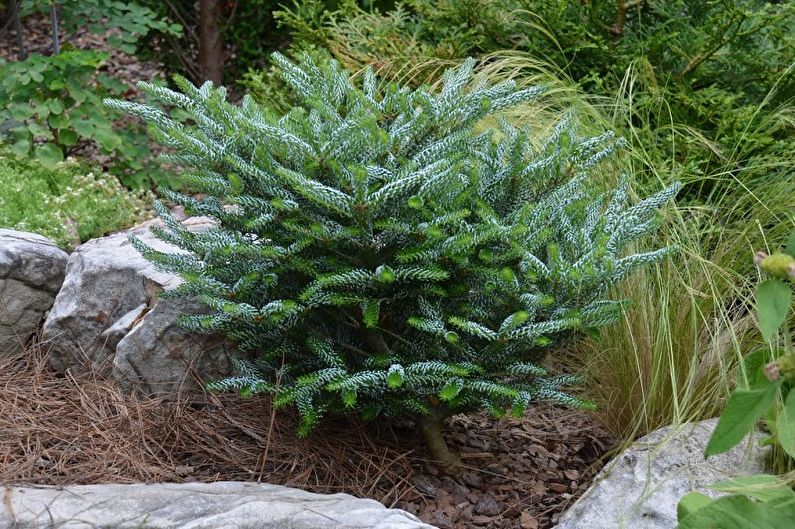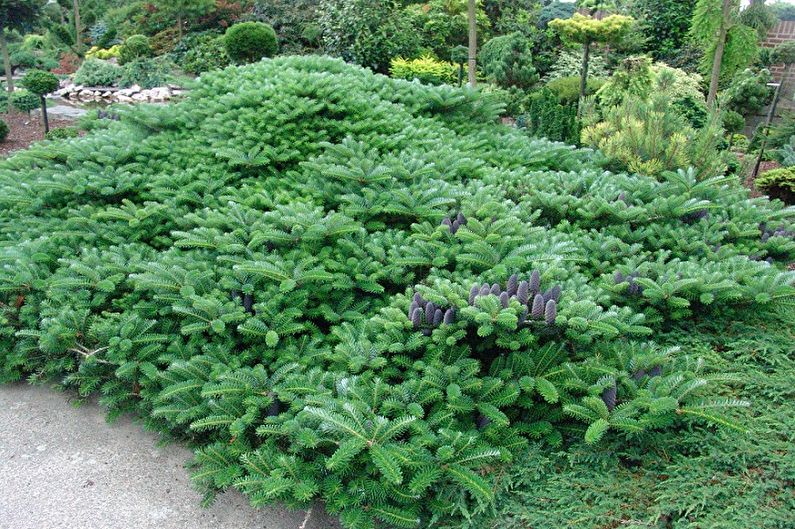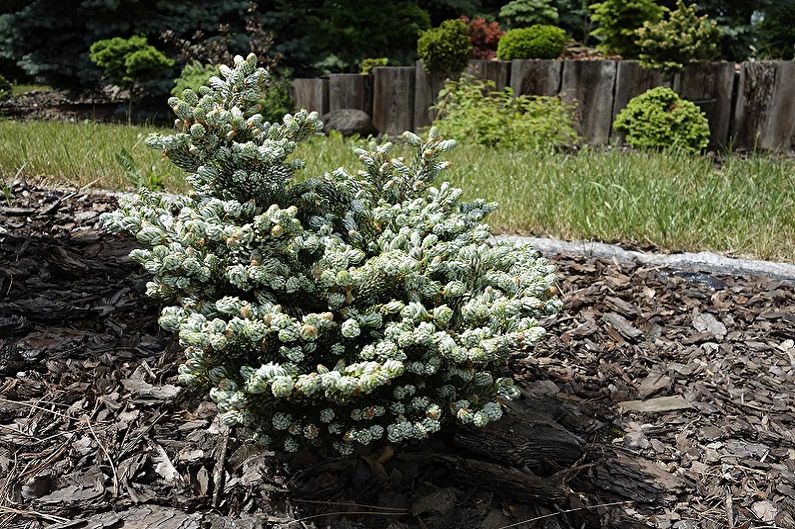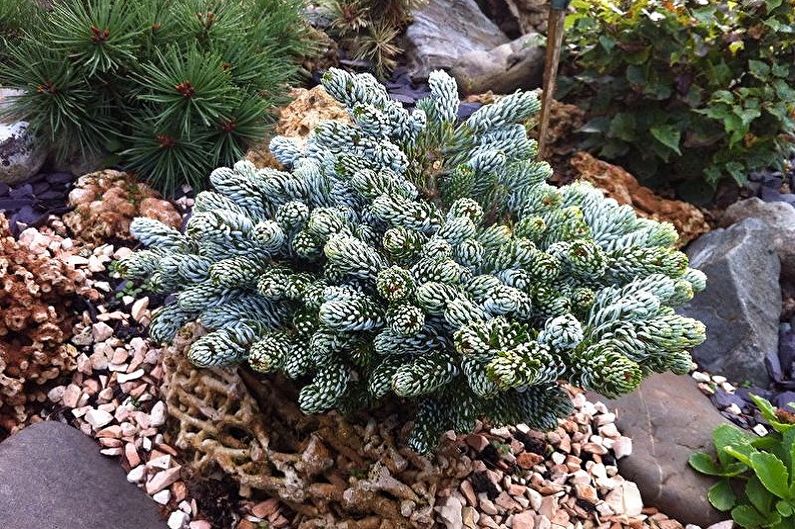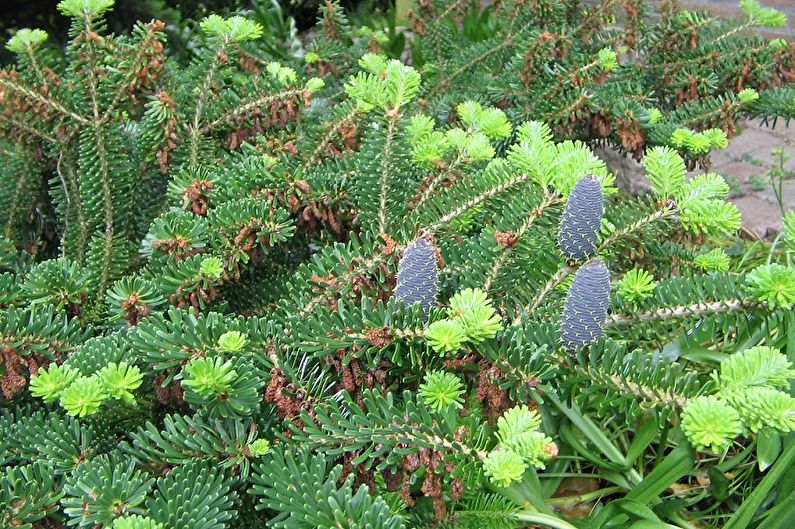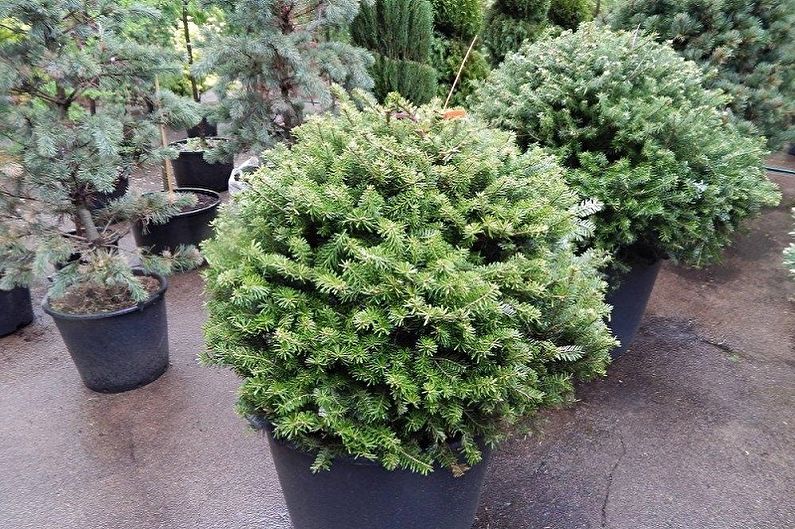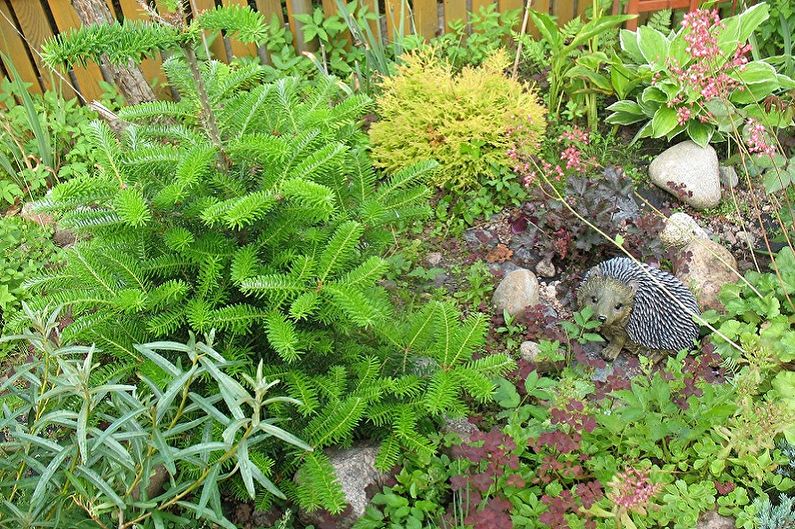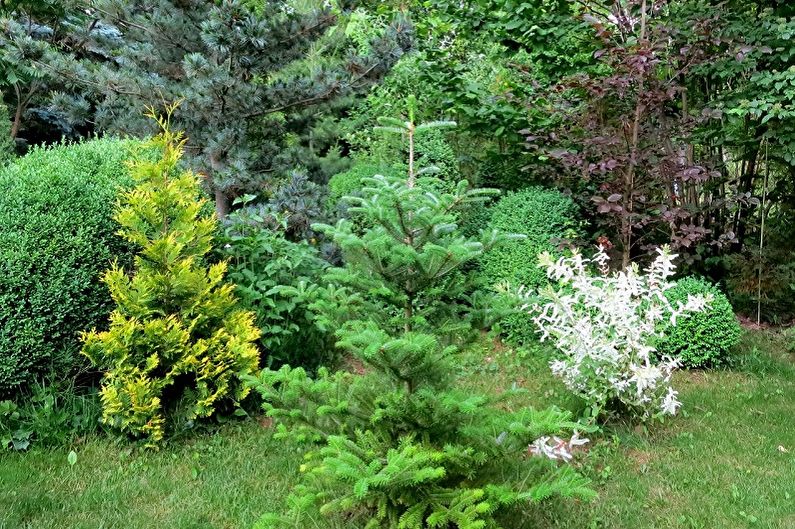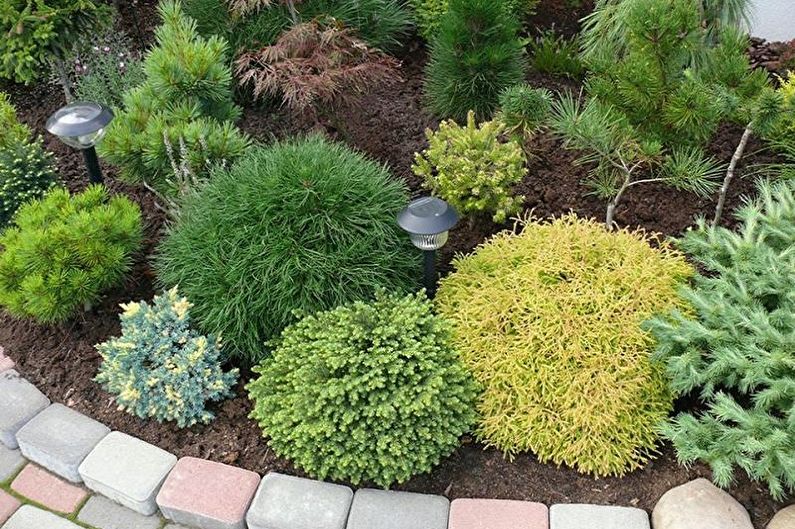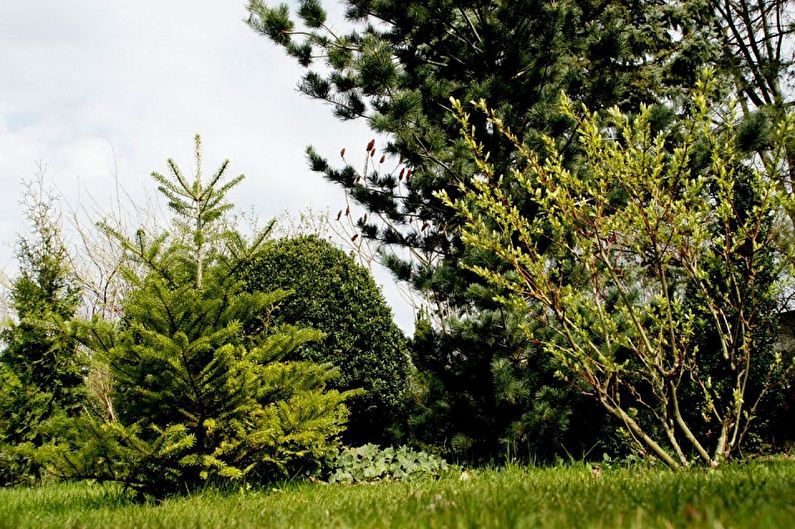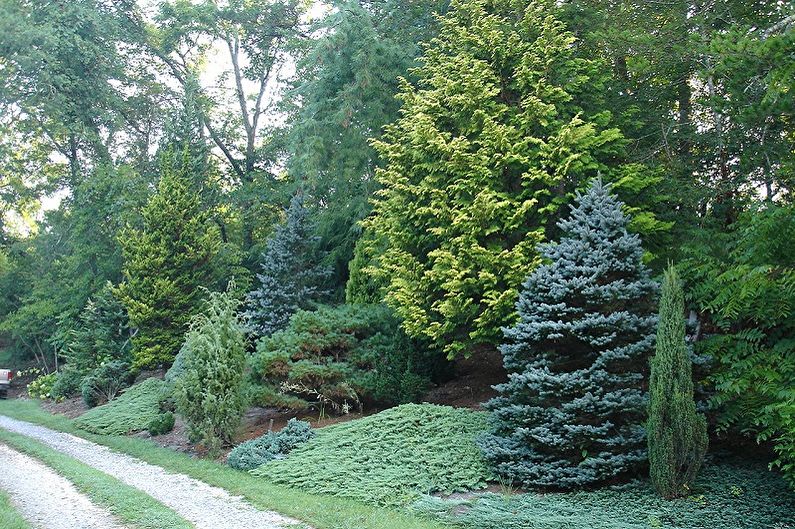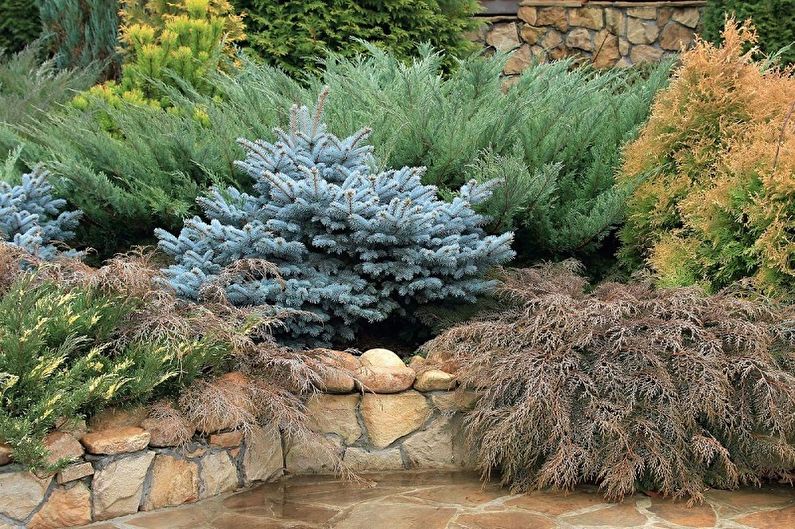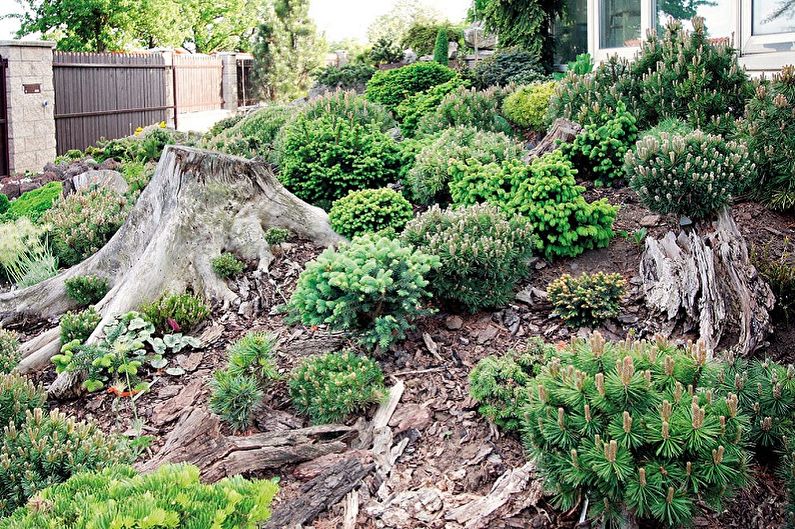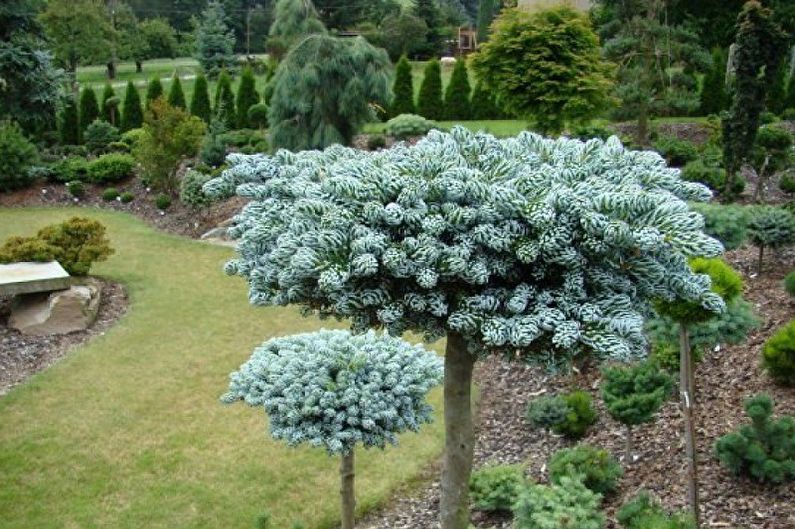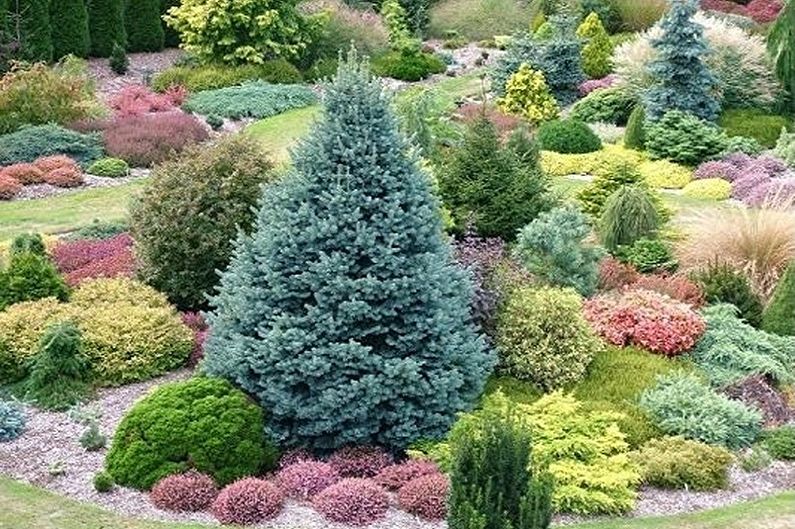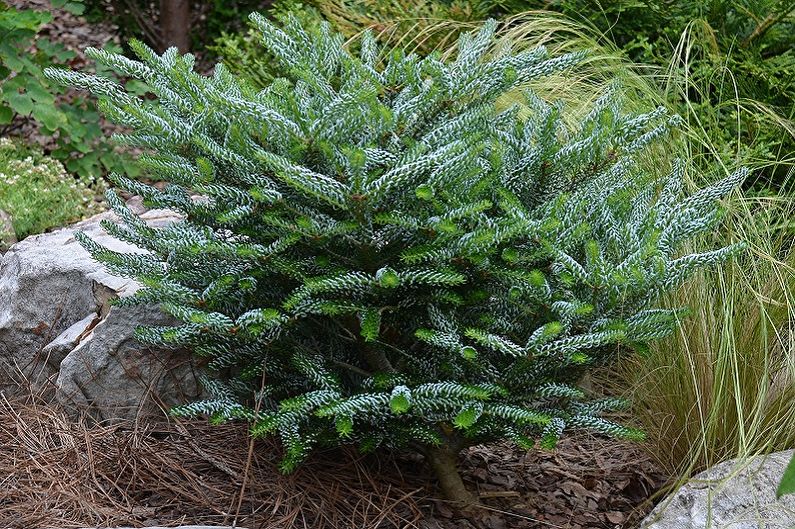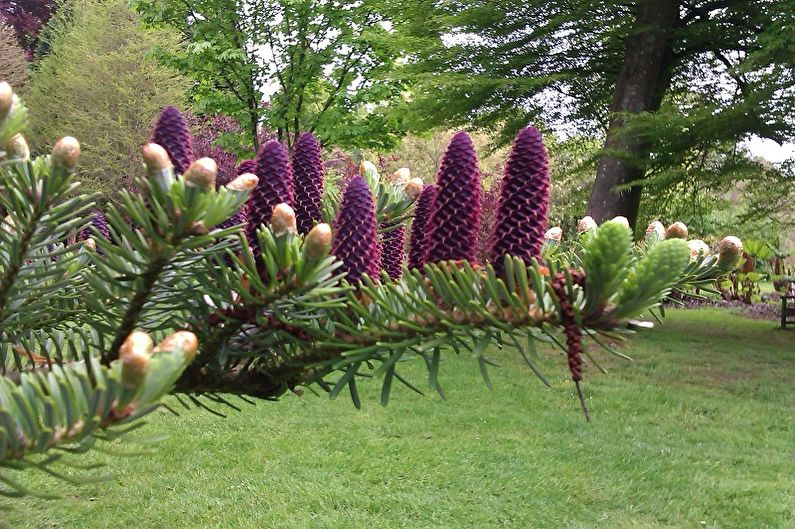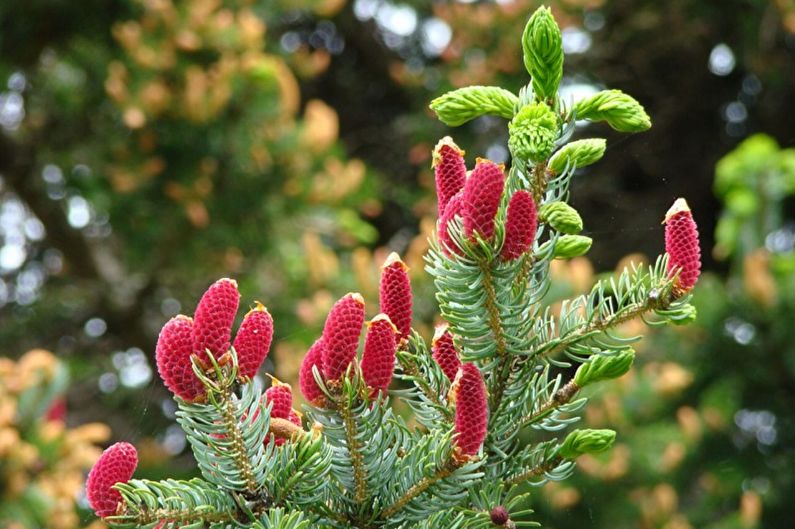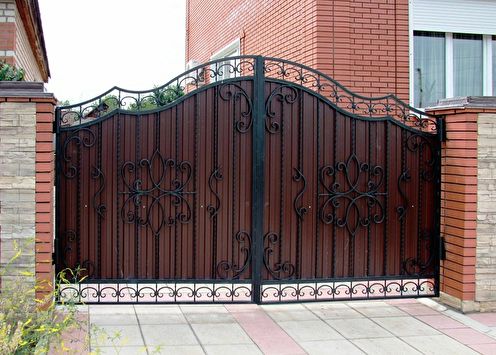
Korean fir can rightfully be called a beauty with amazing decorative data. From the name of the plant, it becomes clear that Korea is its homeland, namely, its southern highlands. This is an evergreen tree with a dense luxurious crown. Cones have a rather original appearance, significantly different from spruce ones in their cylindrical shape and violet-purple palette. Indisputable advantages include a persistent tart aroma with healing properties - this is a real storehouse of substances that kill pathogenic microbes.
The main types of Korean fir
Today, about 50 varieties of Korean fir are known, which are represented by dwarf decorative varieties, whose height does not exceed half a meter, and high. Combine their pyramidal crown shapes, sprawling branches with oval cones. Of the most cultivated, the following varieties are distinguished:
Aurea - a small tree distinguished by the canonical crown. Young shoots are golden, and adult needles have a rich green color. Medium-tall fir reaches a meter and a half height by the age of ten;
Piccolo - an even smaller variety whose trunk height does not exceed 35 cm in adulthood, but the crown grows to 1.5 m. The plant is an excellent option for the landscape of the alpine hills;
Brevifolia - Slow-growing genus, which at the age of ten reaches a mark of 1 m. Lush branches can boast of shiny green needles and small cones of purple color;
Taiga - a miniature variety belonging to the category of creeping. It is quite in demand in gardening. The height of the tree does not exceed 1/3 m, and the crown branches in diameter a little more than half a meter. The plant has an original bright green color with a noticeable bluish tint;
Diamond - one of the most valuable relict cultures. The plant is a small cushion-shaped tree with a mixed palette - the upper part is covered with green needles, and the bottom is silvery.
In addition to the varieties considered, many other species are grown in European countries, for example, Tordis, Pankake, Blue hit, etc., whose photos can be found in the further photo gallery.
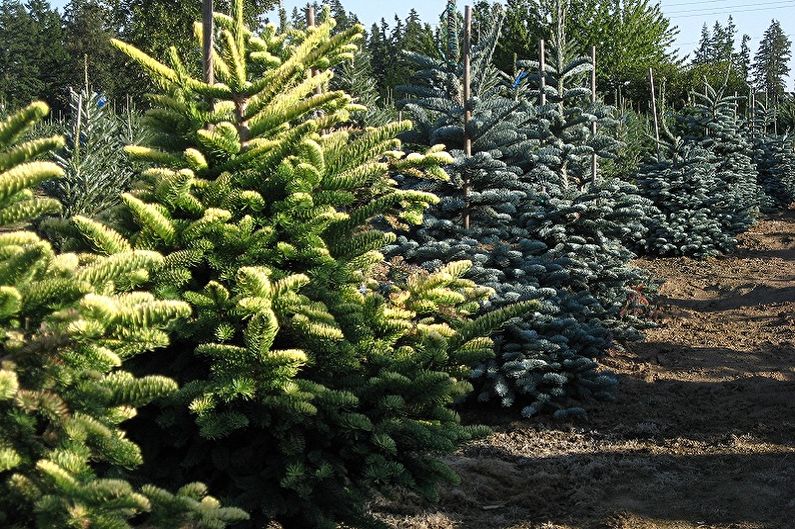
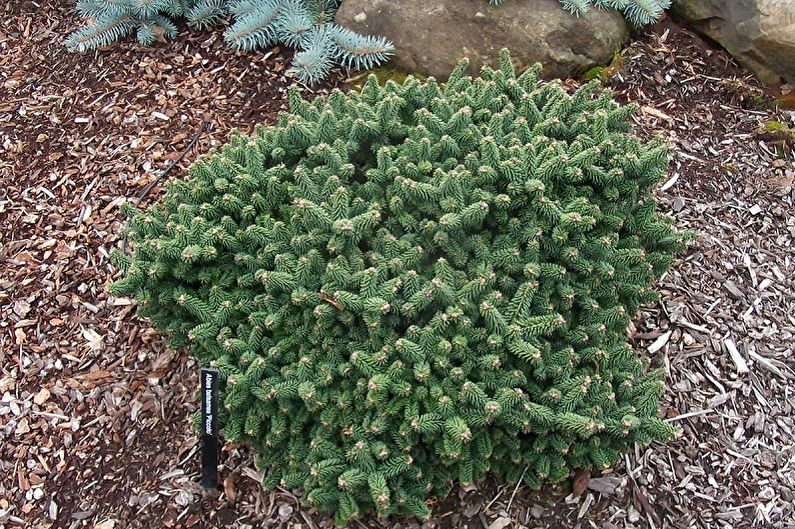
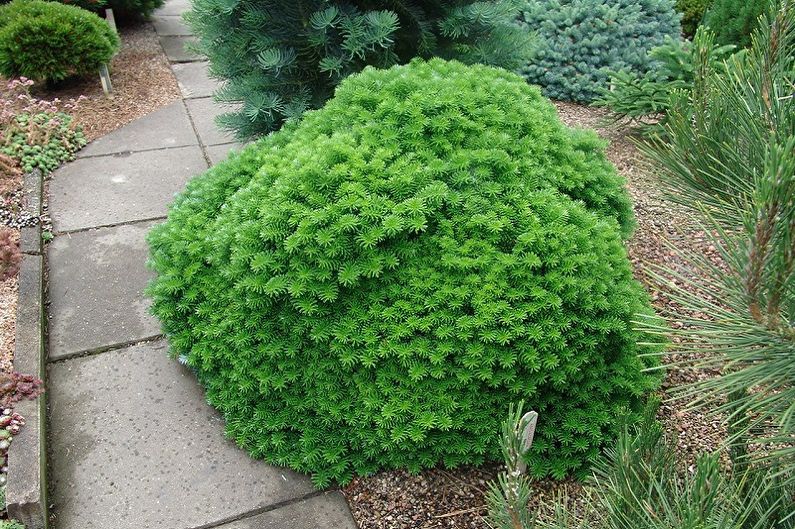
Proper Korean Fir Care
Creating favorable conditions for the plant is not at all difficult. It is important to choose a suitable site for planting, monitor the condition of the soil, its moisture content, and carry out periodic loosening. In order to form a beautiful regular crown in Korean fir, it is necessary to remove damaged and dried branches in time. Compliance with some of the rules below will help avoid diseases.
Lighting
Korean fir is a relatively shade-tolerant crop, but it is better to plant it in well-lit areas. The penumbra is necessary for the plant in the first years of life, and then it can be transplanted into open areas, without beingware of being in direct sunlight.
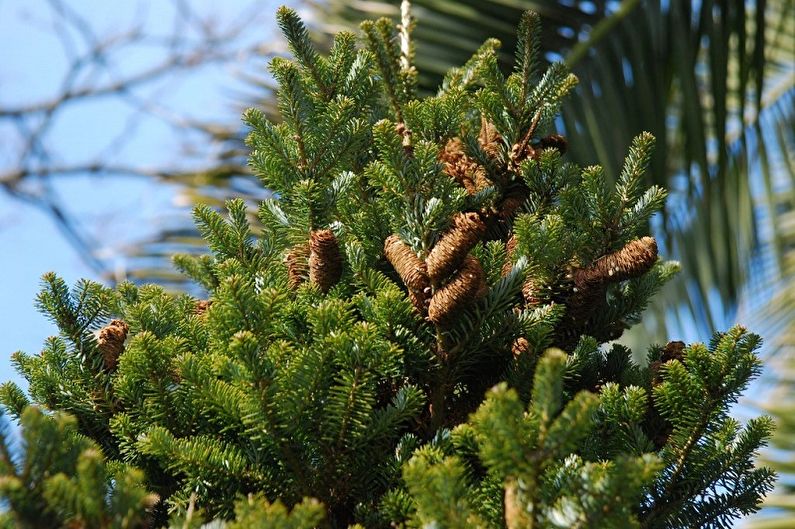
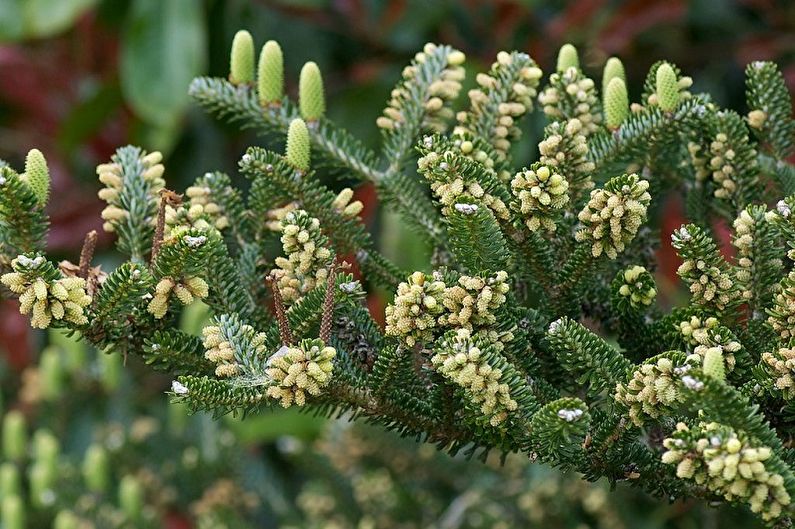
Temperature
Although Korean fir is a native of the tropical zone, its growth high in the mountains has affected the ability to withstand significant seasonal temperature fluctuations. Most plant varieties are frost-resistant, can tolerate winter frosts down to -28 ° C, and some even up to -35 ° C. The exception is young specimens, which they shelter for the first few years for the winter.

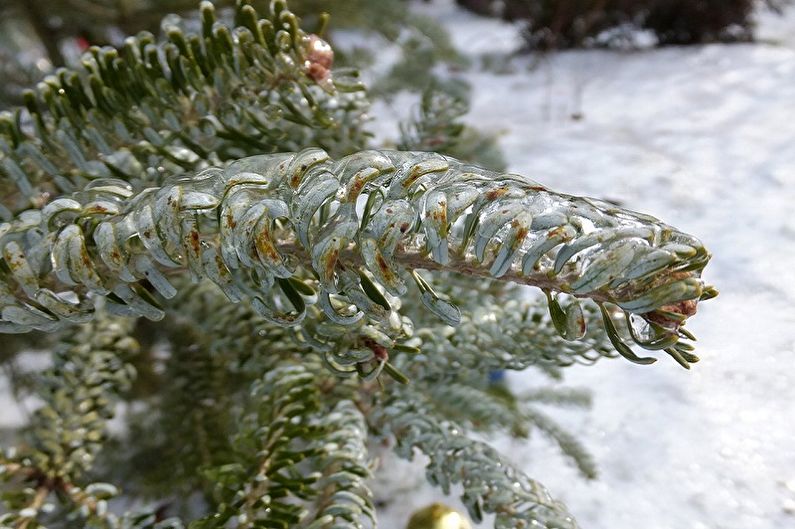
Humidity
The plant feels more comfortable in conditions of high humidity, so in the summer, when there is no rain for a long time, in addition to watering, it is necessary to moisten the crown at least once a week.A negative effect on the development of culture is exerted by waterlogged soil. To avoid this, even when planting, it is necessary to provide a high-quality drainage layer, and mulch the soil.

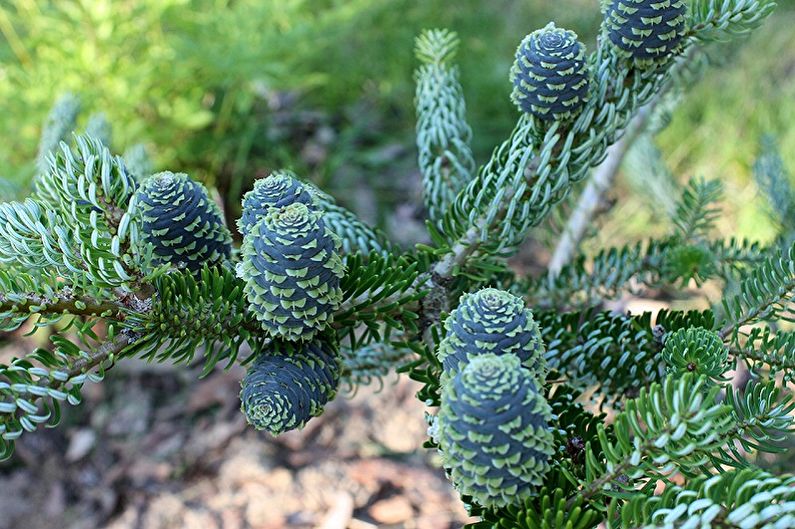
Watering
In autumn and spring, Korean fir is watered periodically when the topsoil begins to dry out, but in the main crop there is enough rainfall. In the hot summer, abundant watering of 20 liters of water per copy is required every week. Also, a young plant needs more frequent drinking during the first month after planting. At this time, it is watered every day.
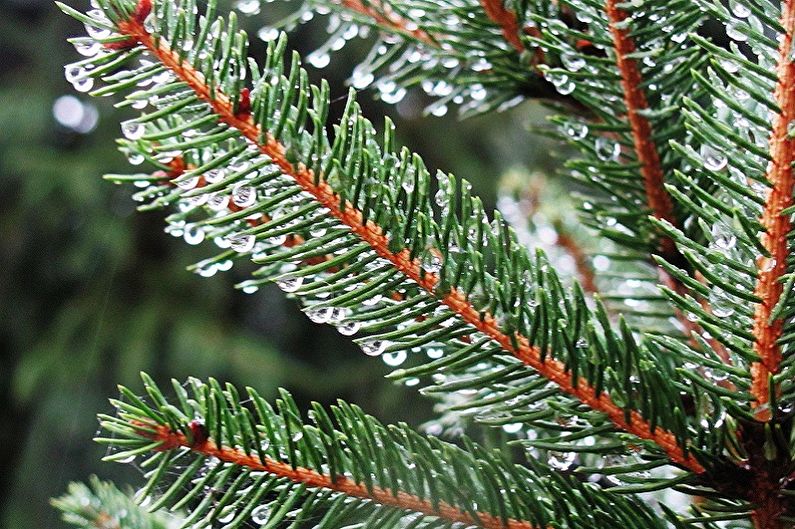
Fertilizers and fertilizing
The first two years after planting, Korean fir does not need additional top dressing - it is quite nutritious enough for the soil. In the future, every spring, it is necessary to introduce mineral fertilizers in the complex composition into the soil. To accelerate plant growth to some extent, it is necessary to sprinkle the top layer of soil with mulch, a layer of about 5 cm, with the addition of peat and sawdust.
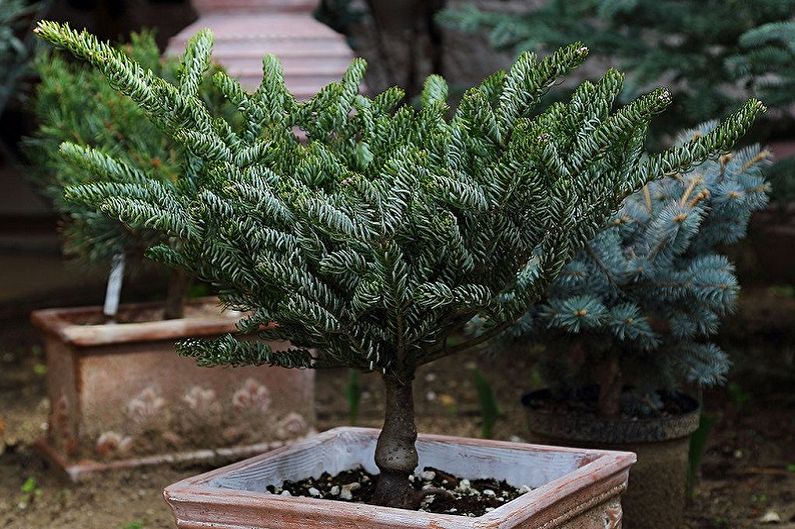

Pests and diseases
Sharp jumps in temperature become a common cause of Korean fir disease, when the needles are falling, and decorative is lost. Sometimes this leads even to irreversible consequences. The plant can comprehend various types of rot, arising from improper conditions.
Pests, such as aphids and its larvae that feed on coniferous sap, do much more damage to the plant. Hermes disease is manifested by a white coating on the needles. Moths and silkworms are also dangerous, the destruction of which is helped by the treatment of plants with insecticides.
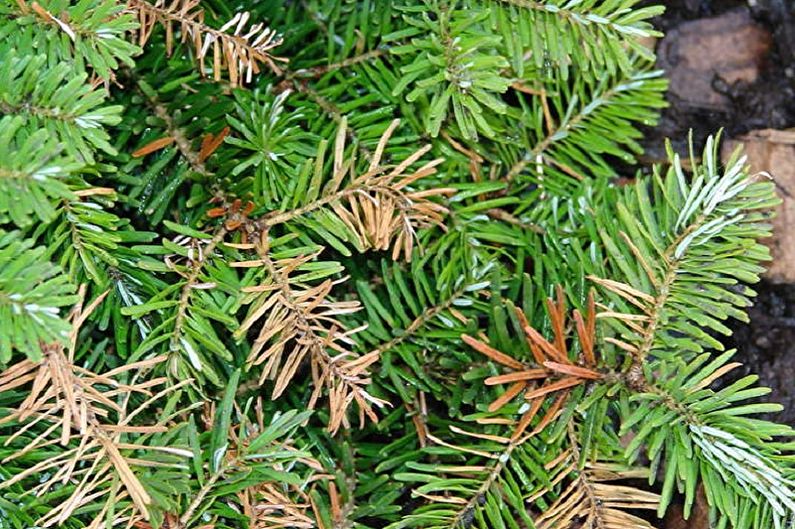
How to transplant Korean fir
Plants change their place of residence in the spring, when the buds have not yet blossomed. For this, it is necessary to prepare a landing pit in advance, not deeper than 80 cm. A pair of buckets of water is poured into it and a drainage layer of crushed stone or chipped brick is poured. Separately, you need to prepare the soil by mixing clay, peat, sand and humus masses, sawdust and soluble mineral fertilizers are added here.
The landing pit is filled with this soil half the depth, a low mound is formed, on which a tree is established. The roots should be carefully spread around the knoll and covered with earth. In this case, the root neck should remain visible above the ground. The landing site is carefully watered and mulched.
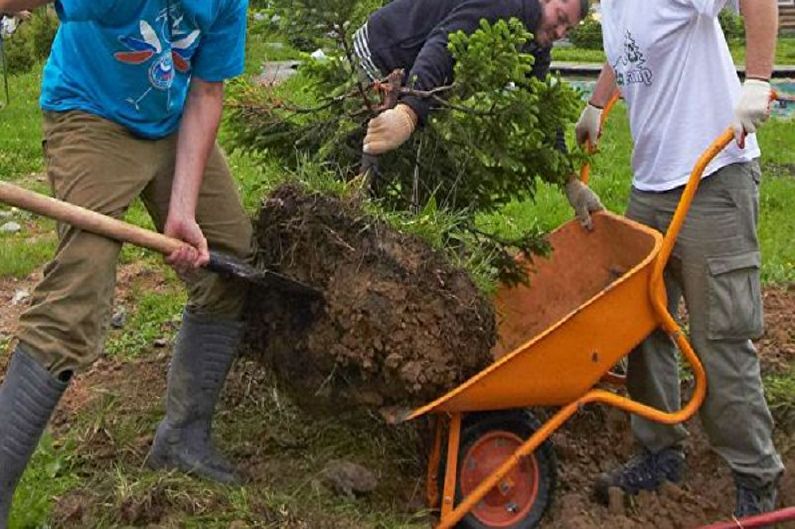
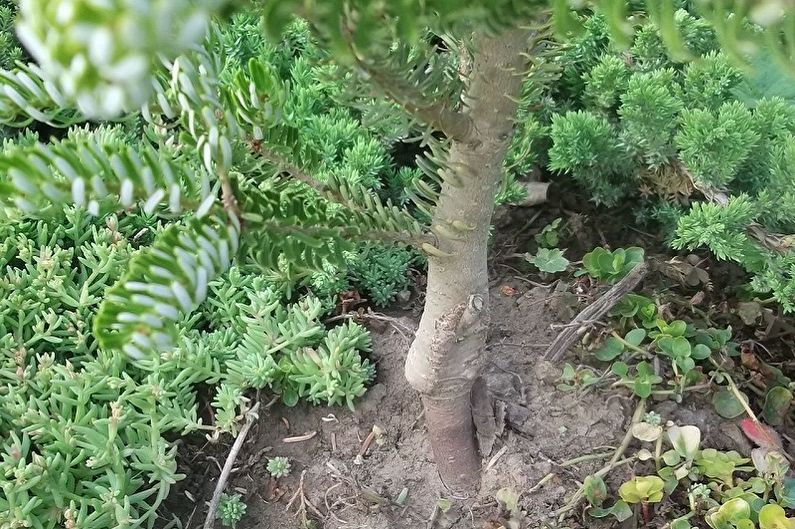
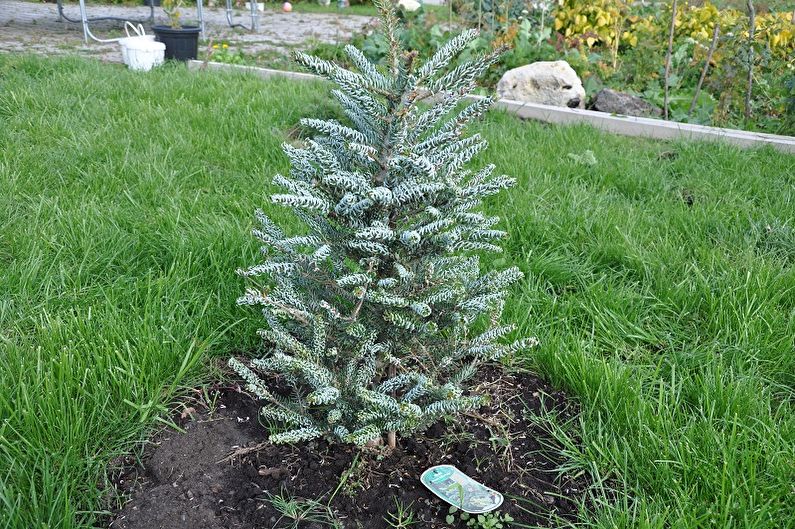
Breeding
Korean fir multiplies safely at home. To do this, use one of several methods.
Korean fir seed propagation
Growing fir seedlings from seeds is one of the most difficult methods. First of all, planting material needs to be obtained, and often the seeds just fly away from ripened cones. It is necessary to take an unopened bump, dry, extract the seeds and send them for stratification in a cold place. The material is sown in the first ten days of April and cover the bed with a film, creating a greenhouse. When the first sprouts appear, the protection must be removed. The garden is regularly watered, weeded and loosened. Transplantation to a permanent place is made in a year.
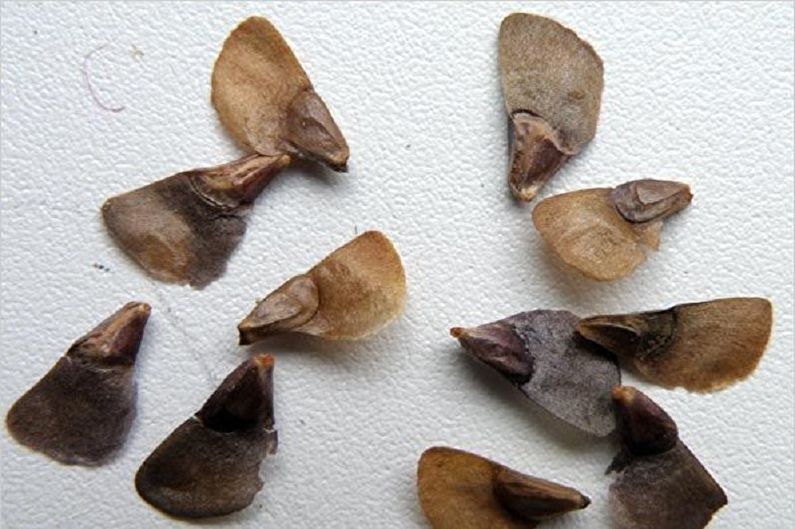
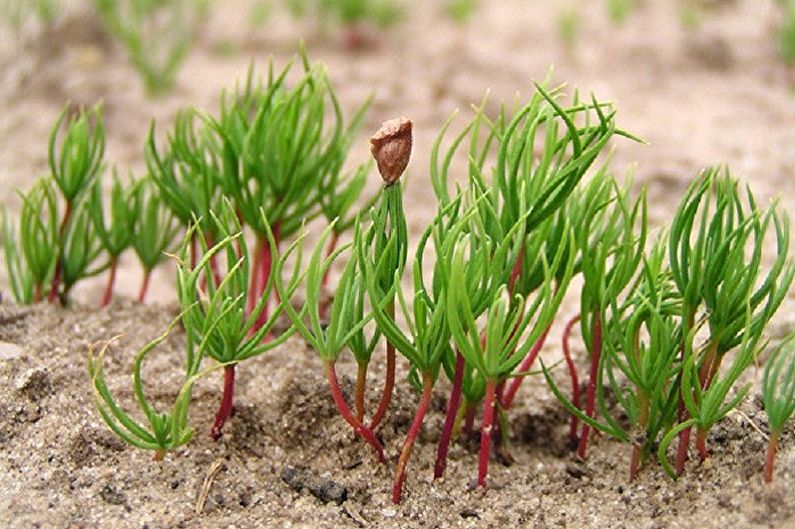
Reproduction of fir Korean cuttings
Cutting of Korean fir is a fairly popular method among gardeners, although it has a long duration of root formation. As the material, annual shoots no longer than 8 cm are selected. They must be torn so that there remains a fragment of the mother wood (heel).
Before planting, the cuttings are treated with foundationazole to exclude possible infections. It is also advisable to sterilize the soil mixture for half an hour in the oven. The cuttings planted in the container are covered with a film or glass. For the wintering season, the garden is rearranged in a basement with a low temperature, and in the spring it is left in the fresh air. Rooting will occur no earlier than in the second year.
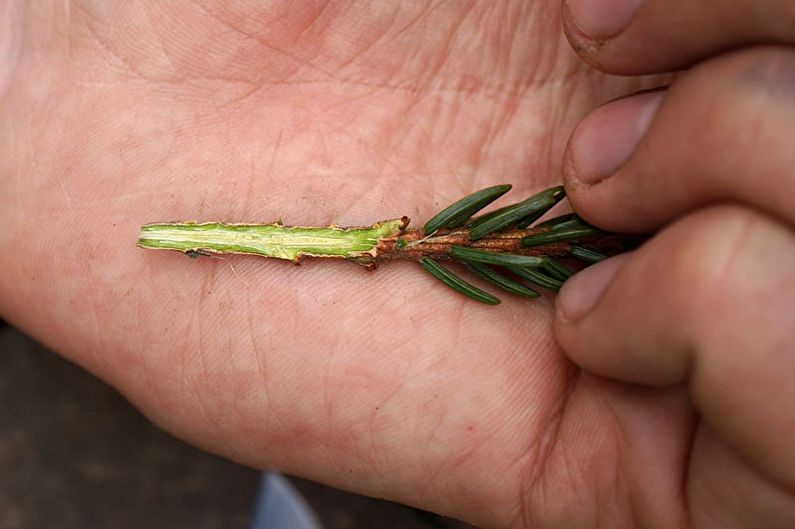
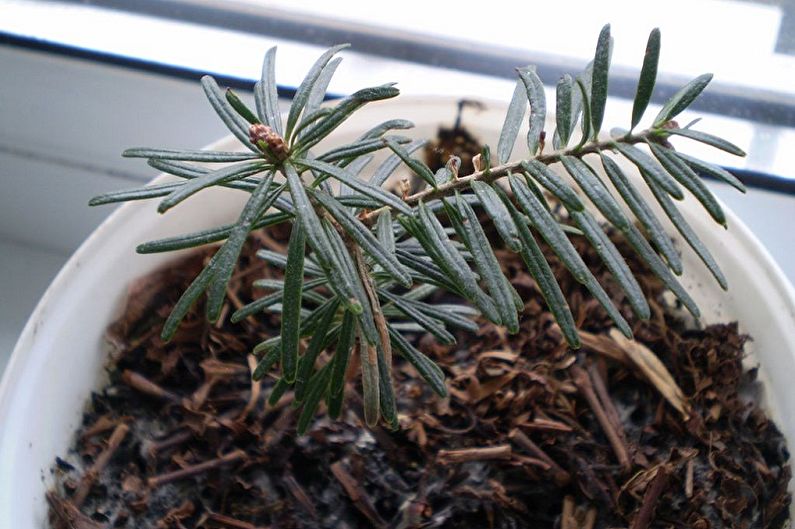
Reproduction of fir Korean layering
This method is considered one of the simplest.The bottom line is that you need to slightly dig one of the lower branches of the tree and fix it in a previously prepared trench. Rooting will occur within two years. An interesting fact is that in this way fir can multiply without human intervention - it is enough for a twig to touch the ground. The disadvantage of this method is the risk of losing the newly-made culture of the conical shape of the crown.
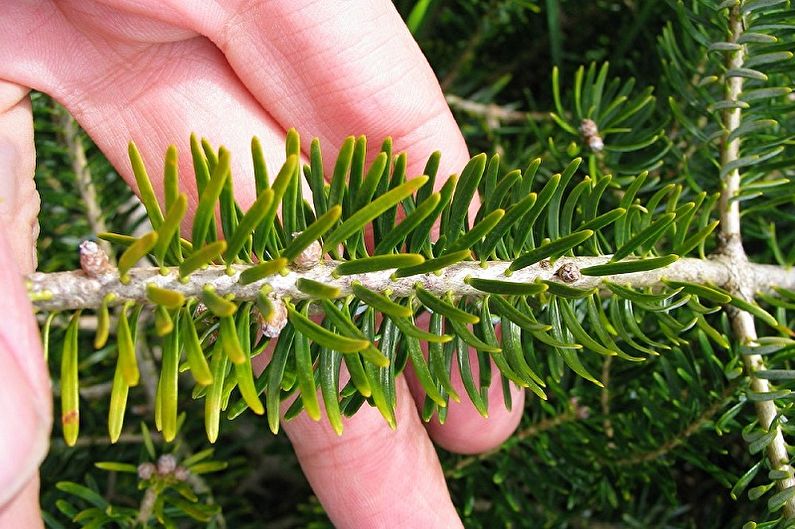
Korean fir - photo
Korean fir has a special place in landscape design. Its characteristics such as slow growth (about 5 cm per year) and decorativeness at any time of the year allow you to preserve the desired landscape compositions for a long time. Its various varieties are perfect for landscaping suburban house territories, successfully combined with both coniferous and deciduous trees and shrubs. More about the fir will tell the photo gallery. Enjoy watching!
